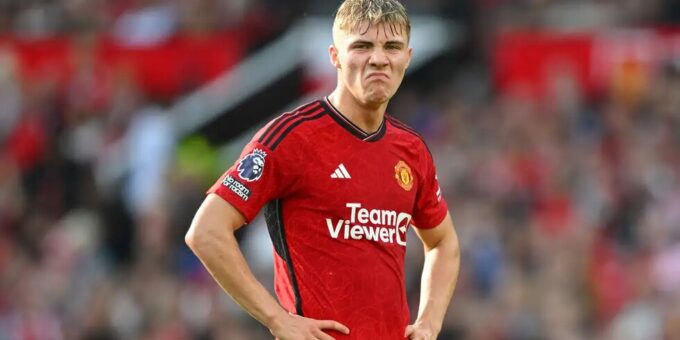
Another factor in Hojlund’s struggles has been the fact that he no longer seems to be the focal point of United’s attack. Ever since Scott McTominay scored twice in added time to snatch a 2-1 win over Brentford, Erik ten Hag has deployed the Scotland international in an advanced role.
At times it has seemed as though McTominay is the centre-forward and Hojlund the No. 10 or wide forward. It is a highly intriguing tactical shift considering United paid so much money for Hojlund and would have been happy to part with McTominay in the summer had they received any decent offers.
McTominay has struck three times since then in the top-flight and once in the Champions League against Copenhagen, making him the team’s most unlikely top scorer with six goals in all competitions. He proved the difference against Chelsea, which was United’s best display of the season, and seemed to vindicate Ten Hag’s faith in him.
“Sometimes he is deep [in the opponents’ half] and sometimes he is lower but our game plan is that we want him to be high [up the pitch] often,” Ten Hag explained.
“So the team has to make it happen that he can come high and that he can come into positions where he is around a striker and then he can make a run. He has a very good smell for when to arrive. The team has to make sure that we bring the ball with him.”
But the tactical shift, which has been compared to Jose Mourinho’s use of Marouane Fellaini, has come at a cost. United seem less able to dictate games when using McTominay as a lethal passenger whose main job is to get into the box and their build-up play is less fluid.
And that does not suit Hojlund, who is at his best when he is latching on to through balls and can use his pace to get behind defenders. The Dane’s best moment for United was his thunderous run through the middle of the pitch to score at home to Galatasaray, which brought back memories of Ruud van Nistelrooy bulldozing his way through Fulham’s defence 20 years previously.
But what was telling about that move was that it was all of Hojlund’s making. He had pounced on a gap in the Galatasaray midfield and took matters into his own hands, producing a deft finish after running half the length of the pitch.
That goal demonstrated Hojlund’s potential when set free and should have led to United trying to thread passes through to him behind high defensive lines. But that requires them to control games by dominating possession and trying to pick holes in the opposition – something they are currently incapable of doing.
Christian Eriksen is the one player who can give United more control and pick out the type of passes Hojlund relishes but he has been absent since mid-November, and even when fully fit he struggles to finish games.
But Eriksen’s fitness struggles are nothing new. What is astonishing is that United bought Hojlund without a proper plan of how best to integrate him into the team and make him tick.

Nearly as bad as Weghorst
The encouraging thing about Hojlund is that he is not letting his lack of goals on the domestic front get him down and is continuing to work his socks off and sprint to make it to through balls. He is the opposite of Marcus Rashford and Anthony Martial in that sense.
He knows that nothing comes easy and he is still a young player feeling his way in a new team and a new league. And the fans are still very much on his side, cheering whenever he comes on as a substitute and booing when is he taken off, especially when Martial replaces him.
“I know my worth,” Hojlund said in October. “I know I have to perform every day because I play for Manchester United. In the end, I am only 20 years old and I am not the finished article yet. I still have a lot to improve and I am getting there slowly.”
The bad news is that he is getting dangerously close to being put in the same category as Wout Weghorst, who made 10 Premier League starts plus seven substitute appearances but left United without scoring a single league goal during his five-month loan spell.
Hojlund is clearly a more talented player than Weghorst and a future prospect, unlike the Dutchman, who was brought in as a quick and temporary fix after Cristiano Ronaldo’s acrimonious departure.
But Hojlund was ultimately signed as an antidote to Weghorst’s wastefulness, and the club invested so heavily in him as they thought he would guarantee goals. So far has not even managed one in the Premier League and his feats in the Champions League unfortunately count for nothing now United are out.
Anfield awaits
But there is a very simple way to get back on track and ease the pressure on his shoulders: score at Anfield on Sunday and inspire United to their first win at Liverpool since January 2016.
That is far easier said than done, of course. Liverpool are league leaders, have the joint-best defence in the league and they hammered United 7-0 last season.
Hojlund is running out of excuses and he has to deliver soon. And there’s no better place to do that than at Anfield. But he will need the help of his manager and his team-mates, who need to start playing to his strengths.
